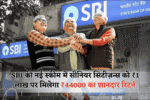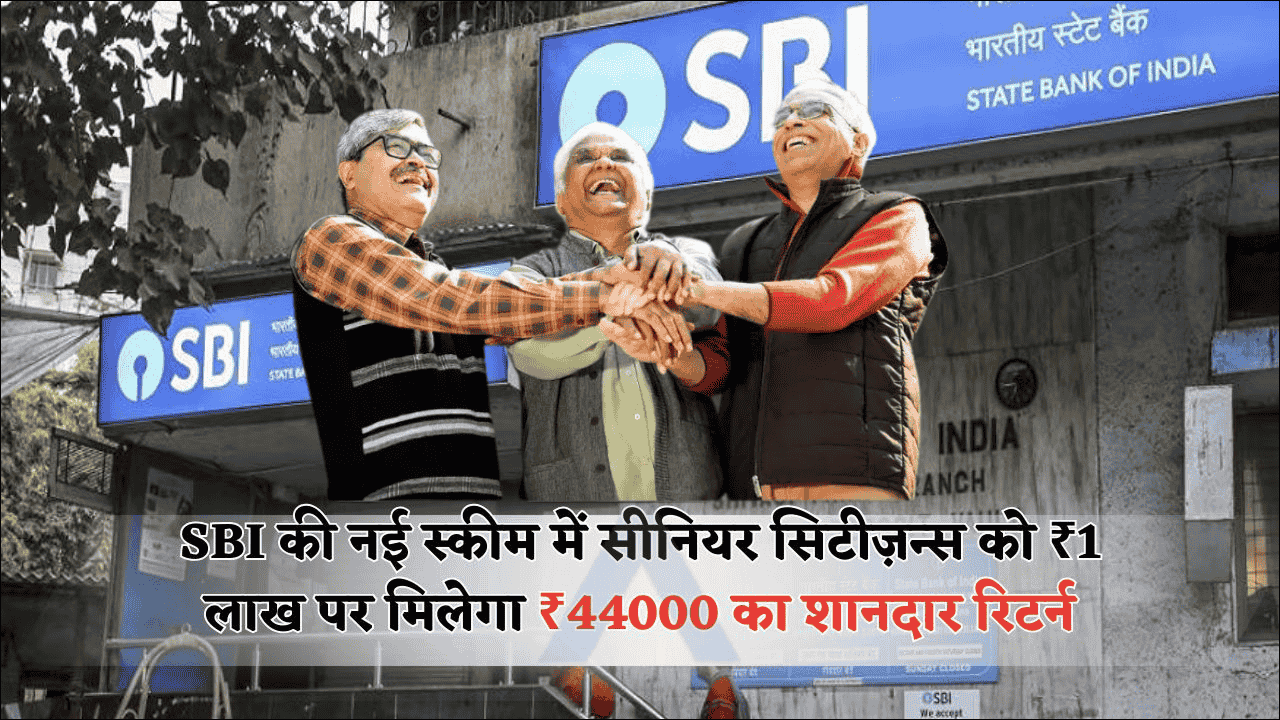
In today’s digital age where unconventional income streams are gaining popularity, many people overlook the hidden treasures lying in their old wallets. Among the most surprising discoveries is the extraordinary value of certain old ₹5 currency notes, which can fetch up to ₹3 lakh in the collector’s market. This remarkable opportunity has transformed ordinary citizens into unexpected beneficiaries of the booming numismatic collecting industry.
The concept of valuable old currency might seem surreal, but specific Indian ₹5 notes with unique characteristics have become highly sought-after collector’s items. These notes, often dismissed as mere pocket change, now command extraordinary prices due to their rarity, cultural significance, and historical importance.
Understanding What Makes ₹5 Notes Valuable
The extraordinary value of certain ₹5 notes stems from a combination of cultural, spiritual, and historical factors that resonate deeply with collectors. The primary value driver is the presence of the number “786” in the serial number, which holds particular significance in Islamic culture, representing the numerical value of “Bismillah-ir-Rahman-ir-Rahim” using Abjad numerology.
Additional valuable features include Mahatma Gandhi’s portrait on the front and agricultural imagery showing a tractor with a seated farmer on the reverse side. These elements represent India’s post-independence vision of progress and rural development, appealing to collectors interested in Indian history and cultural evolution.
Key Value Drivers:
- Spiritual Number “786”: Creates price multipliers of 100-1000x
- Gandhi Portrait: Adds historical significance premium
- Agricultural Imagery: Represents cultural heritage value
- Vintage Printing Quality: Appeals to printing history collectors
- Limited Supply: Drives scarcity-based demand
Essential Identification Criteria
Not all old ₹5 notes command high prices. Identifying valuable notes requires careful examination of specific features that collectors actively seek.
| Feature | Requirement | Value Impact | Verification Method |
|---|---|---|---|
| Serial Number | Must contain “786” consecutively | Critical for premium pricing | Check number sequence clearly |
| Front Design | Clear Mahatma Gandhi portrait | Mandatory for authenticity | Visual inspection for clarity |
| Reverse Side | Tractor with seated farmer, visible tiller | Essential for full value | Examine back design completely |
| Physical Condition | Uncirculated or near-mint condition | Determines final price tier | Assess tears, folds, stains |
| Printing Era | Pre-2005 editions preferred | Historical premium factor | Check issue year if visible |
| Paper Quality | Original government printing | Authenticity verification | Feel texture, examine printing |
The serial number configuration proves most critical, with collectors showing particular interest in notes where “786” appears as consecutive digits like “786,” “1786,” “5786,” or “78601.”
Market Value Analysis
The potential earnings vary dramatically based on specific characteristics, condition, and market demand. Understanding this pricing structure helps sellers set realistic expectations.
Value Ranges by Characteristics:
- Perfect “786” + All Features (Uncirculated): ₹2,50,000 – ₹3,00,000
- “786” + Most Features (Near Mint): ₹1,50,000 – ₹2,50,000
- “786” + Some Features (Good Condition): ₹50,000 – ₹1,50,000
- Partial Features Only (Fair Condition): ₹5,000 – ₹50,000
- Complete Matched Sets: ₹5,00,000+ (exceptional cases)
Complete matched sets with sequential serial numbers can command exponentially higher prices, sometimes reaching ₹12 lakh or more, though such sets are extremely rare.
Strategic Online Selling Approach
Successfully selling rare ₹5 notes online requires a strategic approach that maximizes visibility while ensuring transaction security.
Platform Selection
Different platforms serve different purposes:
- Quikr: Best for direct local sales with free basic listings
- eBay India: Auction-style selling with 5-10% commission but national reach
- OLX: Quick local transactions with free listings
- Facebook Marketplace: Community-based reach through social networks
- Specialized Numismatic Sites: Target serious collectors with expert knowledge
Listing Optimization
Creating compelling listings requires strategic presentation highlighting unique features while building buyer confidence.
Photography Best Practices:
- High-resolution images showing both sides clearly
- Close-up shots of serial numbers and key features
- Natural lighting to show true colors and condition
- Multiple angles demonstrating overall state
- Timestamp or watermark for authenticity verification
Description Strategy:
- Lead with “786” serial number prominently
- Describe all visible features systematically
- Include historical context and cultural significance
- Provide honest condition assessment
- Share provenance information if available
Step-by-Step Selling Process
Executing successful sales requires methodical preparation and attention to each transaction stage.
Phase 1: Preparation (1-2 days)
- Authenticate note features carefully
- Take professional-quality photographs
- Research current market prices
Phase 2: Platform Setup (1 day)
- Create optimized seller accounts
- Build professional profile presentation
- Understand platform-specific requirements
Phase 3: Listing Creation (2-3 hours)
- Write compelling, detailed descriptions
- Upload high-quality photographs
- Set competitive but realistic pricing
Phase 4: Marketing (Ongoing)
- Share listings on social media
- Post in collector groups and forums
- Respond promptly to inquiries
Safety and Security Protocols
High-value transactions attract both legitimate collectors and potential fraudsters. Implementing robust safety protocols protects sellers from financial loss and security risks.
Secure Payment Methods:
- Bank transfers with immediate verification
- Cash transactions in bank premises with security
- Verified UPI payments with receipts
- Platform-secured payment systems
- Escrow services for high-value transactions
Avoid These Payment Methods:
- Personal checks or demand drafts
- Cash-on-delivery without verification
- Wire transfers to unfamiliar accounts
- Unverified digital payment platforms
Additional Safety Measures:
- Meet buyers in public, secure locations
- Use banking premises for cash transactions
- Require signature confirmation for shipping
- Document all transaction communications
- Never share unnecessary personal information
Success Stories and Market Outlook
Recent documented cases demonstrate real market potential. A Delhi resident successfully sold a pristine “786” series note for ₹2.8 lakh, while a Mumbai seller auctioned three related notes for ₹4.5 lakh by creating compelling historical narratives.
The rare currency collecting market continues evolving, influenced by economic conditions and cultural trends. Social media success stories have increased public awareness, potentially moderating prices as supply increases but also creating broader market participation.
Conclusion
The opportunity to sell old ₹5 notes for substantial sums represents a unique convergence of cultural significance, collector interest, and digital marketplace accessibility. Success requires careful authentication, strategic platform selection, professional presentation, and diligent safety protocols.
While not every old ₹5 note commands premium prices, those possessing specific characteristics valued by collectors can generate significant income. The key lies in understanding exactly what collectors seek, presenting notes professionally, and executing transactions safely.
FAQ
Q: How can I verify if my ₹5 note is genuinely valuable?
A: Check for the specific combination: serial number containing “786,” clear Mahatma Gandhi portrait on front, and tractor with seated farmer on back. The note must be in good condition without tears or damage. Only notes with all features command high prices.
Q: What’s the safest payment method for high-value transactions?
A: Use bank transfers verified in real-time, cash transactions at bank premises with security cameras, or verified UPI payments with immediate confirmation. Avoid checks, demand drafts, or cash-on-delivery arrangements for valuable sales.
Q: Should I get professional authentication before selling?
A: For notes potentially worth ₹1 lakh or more, professional authentication may be worthwhile. Contact numismatic societies or established currency dealers. However, most sales rely on detailed photographic evidence and seller reputation.
Q: How long does it typically take to sell a rare ₹5 note?
A: Sales range from a few days to several months, depending on pricing and presentation quality. If no serious inquiries within 2-3 weeks, consider adjusting price, improving photos, or expanding to additional platforms.







